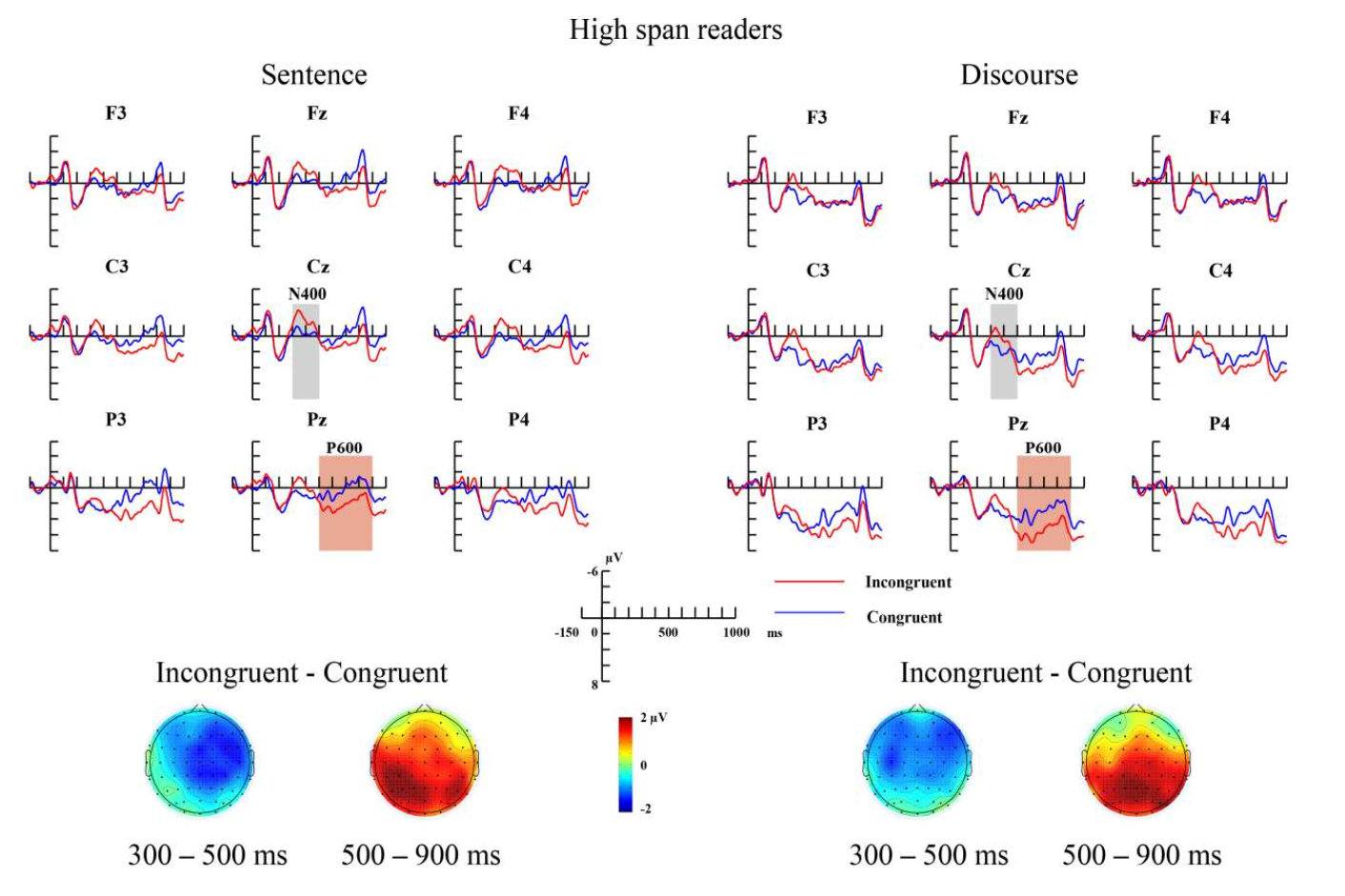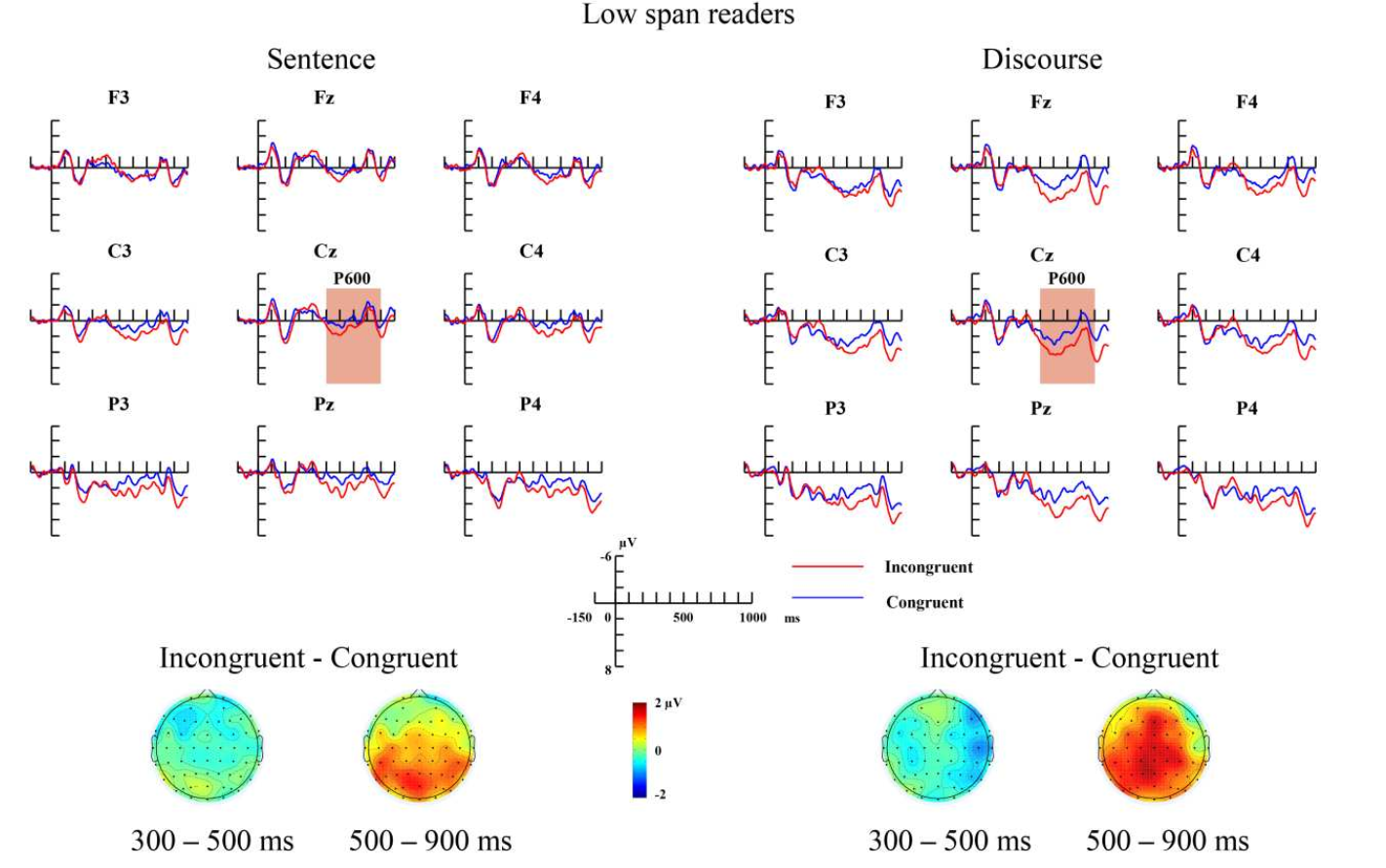A research group led by Dr.YANG Xiaohong from Key Laboratory of Behavioral Science, Institute of Psychology of Chinese Academy of Sciences found that whether a reader can immediately integrate an upcoming word to its prior context to grasp the full meaning of a sentence or discourse depends on the reader’s working memory capacity, but not on the scope of the context.

To understand language, people usually integrate what they hear or read with prior linguistic context for full understanding. What people integrate not only entails local sentence context, but may also include global context introduced in earlier portions of the discourse when words are processed in a discourse context. Previous studies argue that both sentence and discourse context could be immediately used to co-determine the interpretation of the message (Hagoort & van Berkum, 2007). However, These findings on semantic integration are largely based on participants of averaged working memory capacity with the assumption that everybody integrates language information in more or less the same way. What has been largely neglected in the literature is an individual working memory perspective, which may be crucial for a full understanding of semantic integration.
To investigate whether working memory capacity affects the time course of semantic integration at sentence and discourse level differently, Yang and colleagues constructed both sentence and discourse stimuli and used an extreme group design to identify the high and low span groups. They recruited a sample of 221 college students and screened them for their working memory capacity with the Reading Span task proposed in Daneman and Carpenter (1980). Based on their reading span score, 28 subjects were selected for the high span group and 28 were selected for the low span group. The selected subjects then took part in a reading comprehension experiment during which their brain responses were recorded using Event-Related Potential technique. Some of sentence and discourse stimuli were constructed to contain target words that were semantically incongruent with preceding context. If a reader could immediately integrate an upcoming word with prior context, they are expected to show an N400 effect to the target words.

Figure 1. Effects of semantic incongruence for the high span readers: ERPs elicited by semantically incongruent words (red line) and congruent words (blue line) in the sentence (left-hand panel) and discourse (right-hand panel) context.

Figure 2. Effects of semantic incongruence for the low span readers: ERPs elicited by semantically incongruent words (red line) and congruent words (blue line) in the sentence (left-hand panel) and discourse (right-hand panel) context.
The results showed that while the high span readers showed the N400 and P600 effects to semantically incongruent words, the low span readers only showed the P600 effect. This pattern was found regardless of whether the incongruent words were placed at sentence or discourse context. “These results suggest that the low span readers are relatively delayed than the high span ones at both sentence- and discourse-level semantic integration”, Yang says, “These findings indicates that individuals’ working memory functions may have a greater influence on reading efficiency than context scope”.
The paper was published in Neuropsychologia. The work reported in this paper was supported by Natural National Science Foundation of China [grant numbers: 31871108 and 61433018] and CAS Key Laboratory of Behavior Science, Institute of Psychology [grant numbers: Y5CX052003].
Yang, X., Zhang, X., Zhang, Y., Zhang, Q., & Li, X. (2020). How working memory capacity modulates the time course of semantic integration at sentence and discourse level. Neuropsychologia,107383.
CONTACT:
Ms.LIU Chen
Institute of Psychology, Chinese Academy of Sciences
Beijing 100101, China.
E-mail: liuc@psych.ac.cn
